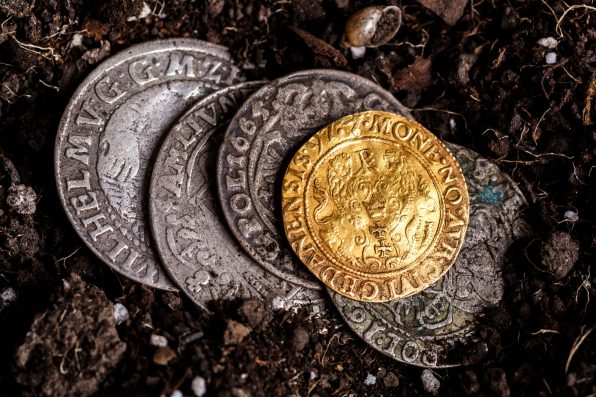During the early medieval period in Europe, silver was used to make coins. Silver coins played an important role in the region’s economy. Until recently, experts weren’t sure where the silver came from. Now, a team of researchers has managed to trace the origins of the precious metal.
Previously, it was thought that the silver came from Melle in western France or from a forgotten mine. Another theory claimed that church silver was melted down to make the coins. No solid evidence for either of these explanations was found in the past.
In a study published in the academic journal Antiquity, the research team analyzed the chemical composition of 49 silver coins that were minted between A.D. 660 and A.D. 820. The coins were from what is now England, northern France, Belgium, and the Netherlands.
It is known that the switch to the usage of silver coins occurred around A.D. 670, but the source of the silver that spurred the change was a mystery.
The 49 coins were examined using a technique called laser ablation analysis, which involves using a laser to carve into a tiny area of a coin to reveal its chemical makeup. There were two things the researchers wanted to identify from their studies.
“One is the elemental composition: what elements are in the coin, with the small amounts of things like gold or bismuth being most revealing; the second is lead isotopes, or atomic variants of lead, which vary between regions and mines. This method gives good results but with minimal physical impact on the coins,” Rory Naismith, a co-author of the study with the University of Cambridge, said.
The researchers learned that the silver came from two different sources. The silver used to make the older coins dating back between A.D. 660 and 750 was mined in the eastern Mediterranean region somewhere within the Byzantine Empire, which was an unexpected discovery.
“It’s fair to say we were surprised by this result,” said Jane Kershaw, the lead author of the study with the University of Oxford. “We know of some surviving Byzantine silver from Anglo-Saxon England, most famously from Sutton Hoo, but far greater amounts of Byzantine silver must have originally been held in Anglo-Saxon stores.”
She added that the elites were most likely melting down silver from valuable objects and turning the silver into coins, leading to the widespread circulation of cash in the economy.

Sign up for Chip Chick’s newsletter and get stories like this delivered to your inbox.


